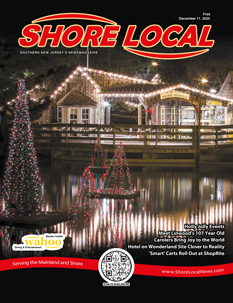Part 1 in a 2 part series
By Sarah Fertsch
Staff Writer
Looking to sell seashells by the sea shore? You’ve probably seen hundreds of shells in a variety of shapes and colors as you’ve enjoyed New Jersey’s beautiful beaches. The sand you’ve stood on has been formed by rocks and shells beaten down by waves over hundreds of thousands of years. On northern beaches like Sandy Hook, you’ll notice coarser sand, and in Atlantic City, sand tends to be softer and finger. Down by Cape May, there’s pebbles and Cape May diamonds. Why? It is because of the differences in land masses, which cut the waves at different angles, causing sand’s texture to be irregular. Amongst these sands and rocks, shells along the coast of New Jersey tend to stay the same. Here are some of the most common shells you’ll find on the beach along the Jersey Shore:
Knobbed Whelk
This is New Jersey’s state shell. The knobbed whelk comes from a predatory sea snail, which are native along the east coast between Maine and northern Florida. The shell is dextral, meaning the snail is “right-handed,” or moves from the right side. The color is usually pale gray or ivy and the inside tends to be a muted orange. These snails live in deep water, and when they die or switch shells, their little mobile homes wash up on our coastline. Like conches, you can eat knobbed whelks deep-fried or in a salad.
Blood Ark
These white bivalves can be found from Canada to Brazil. Surprisingly, the shell has dark brown fur growing on it! The periostracum protects the invertebrate and makes the shell thick and sturdy. The 35 hinglines between the shells act as teeth for the clam. The animal is named as such because it is one of the few mollusks to have red blood. It thrives in about ten feet of mood below shallow water.
Common Slipper Shell
This shell belongs to a medium-sized snail found across the Atlantic Ocean. The boat shell, as it is also known, is considered an invasive species in Italy, Denmark, the United Kingdom, France and Spain because of its damage to oyster fisheries. They are often consumed as a part of clam juice or clam broth, and in Hawaii, they are considered a delicacy.

Ponderous Ark
Rarer in New Jersey, this shell is one of the most common shells found on Sanibel Island in Florida, which is considered a beachcombing Mecca. Many tourists confuse this shell with a white shell that had tar spilled on it. It can be typically found between Virginia and the Gulf of Mexico. It resides in shallow water on the ocean floor.












